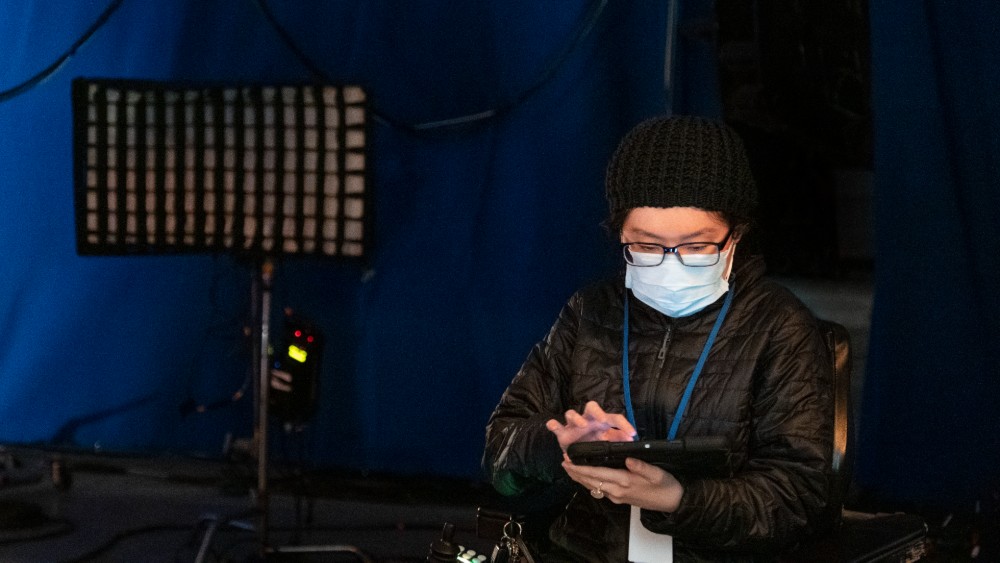
Though the Executive Board of the Visual Effects Society (VES) is currently entirely comprised of women, there’s little question that the visual effects community has long been the epitome of a “boys’ club.” You really only need to look at this year’s Oscar nominations to see that there wasn’t a single woman nominated among the VFX Supervisors in the Visual Effects category. In fact, only one woman VFX Supe has ever won in the Visual Effects category, which dates back to the ‘60s. (Before that, the category was called “Special Effects,” for you Hollywood history buffs and awards junkies.)
With March being International Women’s Month, and this year’s VES Awards taking place tonight, we wanted to share an interview Below the Line did with VFX Supervisor Kaitlyn Yang, a woman who is definitely working to make a difference with her Burbank-based Alpha Studios. Besides being a woman of color, she also represents people with disabilities who are working in the entertainment industry, having co-founded the 1in4Coalition.
Yang’s recent work can be seen in the Apple TV+ series The Shrink Next Door starring Paul Rudd and Will Ferrell, and she’s also about to start working on the Disney+ series American Born Chinese, which is based on the graphic novel by Gene Luen Yang and has enlisted Shang-Chi helmer Destin Daniel Crettin to direct multiple episodes.
This interview took place a few months back, so we mostly spoke about Yang’s efforts to create awareness around increasing diversity and inclusion in the visual effects world, as well as her work on The Shrink Next Door.
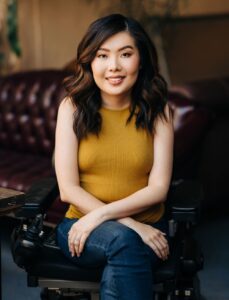
Below the Line: Nice to meet you, Kaitlyn. I’d love to start with your background. Did you go to school specifically for animation or graphic art? What eventually got you into visual effects?
Kaitlyn Yang: I was really lucky. When I was nine years old, many things happened right at that young age that I think set me up for the life that I have now. I was originally born in China. I think Zoom is this platform that has leveled a lot of the playing field, but I’m also a wheelchair user, and in China, that meant if you had a physical disability, you’re not allowed to attend school. I was born to two very ambitious doctor parents, who I’m sure wanted me to be a doctor the second I was born. They were like, ‘Well, how is she going to do that, if she can’t get her Ph.D.?’ I think this is still the case to this day, but if you do have a disability in a country like China, your whole livelihood is really left upon your family and your parents. My parents just wanted me to have a fair shot with education like everything else one would hope for their kid. They really made the ultimate sacrifice. They moved us here to the U.S. in 1997, and they were looking for ways for me to acclimate to the new culture and pick up the language. Their method was for me to make flashcards — they did a ton of that in their residency days — but I was nine, and I was like, ‘That’s not gonna happen.’ My version was watching movies. I did the Blockbuster plan, where you can rent a movie a day — I think I did that for 10 years of my life. At first, it was a reason for me to pick up the language, but quickly, I just became enamored with storytelling.
At that time, the films that were the most popular were Star Wars, so I got bit by the bug relatively early in life, and I watched Star Wars — my first one was Phantom Menace — and then after I watched that one, I was like, ‘Oh, I just have to watch them all.’ I had to figure out the storyline. In my very naive nine-year-old perspective, I was really intrigued [by] how they got the cameras to be in outer space. [laughs] Having just seen Jurassic Park, I was like, ‘Okay, so there are dinosaurs, and you can also film in space. So how can I film in space and work with dinosaurs?’
That led me just to tons of research on my own. I was kind of like an R&D head from the very beginning. Once I learned something, I absorbed everything that I could — I really wanted to do my own deep dive. That just turned into a lot of trips to the library every day, reading books on how you make miniatures, and how do you force perspective? How can you do things in greenscreen, like optical printing, and all the other traditional methods that they developed that made the original trilogy happen?
I was also looking at people that I can emulate or model my life after, and I found John Knoll, of all people, and I was just like, ‘Yeah, I’m just gonna do what John Knoll did and go to USC Film and study animation and study computer science and work in visual effects.’ And so, fast forward to 2021, that is what I’m doing. And John is my mentor now, which is crazy, full circle. I did go to USC for animation and computer science. I also have an MBA, and I run my own company, so I think I’m really living the life that I dreamed up when I was nine.
BTL: That’s an amazing story. I feel like 1997 was a great year for visual effects after Jurassic Park and what George Lucas was doing, shooting everything on green screen, and everything was being done using visual effects.
Yang: That was a world that really just captured my interest. My parents’ perspective was, ‘Okay, she has something that keeps her busy after school, and that’s kind of like our babysitter for the time being.’ But for me, I was just really fascinated [by] everything I was reading. My parents were able to get me my first computer and back in the day, it just came with Photoshop, so I feel like my after-school was just [playing] with Photoshop and Minesweeper and Solitaire. It really captured the early 2000s for me, in a way, and I was able to find my own way in this medium of like, ‘What is a composite? What kind of attributes should I look for when I’m putting a few images together? Should I look for photos that were taken around the same time of the day, paying attention to shadows? Oh, some of this is really blown out. That doesn’t really look pretty. How can I find something else?’ And so I was kind of in my own world of watching all the movies that are an inspiration to me to this day, but then trying on my own with the limited tools that I had, with Photoshop or with Paint, and making my own PNGs and GIFs and so forth.
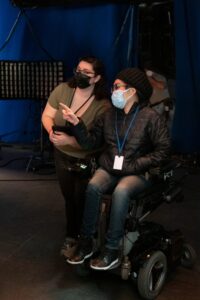
BTL: Did you actually work or intern at any of the big VFX houses in LA?
Yang: I did, yeah. I was really lucky in the sense that I feel like once you get into the “USC Mafia,” there are tons of connections to be made there. I think the first five or six jobs, I was hired by USC alums, so I was able to work at a lot of houses in LA. I really liked working at Encore, I just really liked how I was treated there and being accepted right off the bat. Another full circle this year, one of the founders of Encore, Tom Kendall, who [used to be] at Picture Shop [before it merged with Ghost VFX], I was able to use as a vendor on Shrink. I think that’s like the ultimate full circle of them taking me on as a junior compositor, and seeing all the way up with me being a VFX supe on one of the shows. One of the last places I worked out of was Framestore, and that was [on] a wish list of mine since I was a kid. I loved working there and all the people are great. I think it’s one of the most inclusive places I’ve ever worked at, too, just in terms of the makeup of the artists and management team.
Around that time, I was offered [a job] by another larger company [to] start a branch in India for their VFX office there. I felt like I was at a crossroads, because obviously, I wanted the experience, but I don’t know how beneficial it would be for me to emigrate from a country that was inaccessible, and then now move back to a country that’s probably more inaccessible. I also liked having my roots here in LA. I like having a group of people — film people and non-film people — that I can have as my recharge circle in a way. There are people that I talk shop with, and there are people that are just genuine and talk about other life stuff. I didn’t want to cut that off by moving to another country.
And so, at that intersection, at that crossroads, if you will, I decided maybe the best thing for me to do was branch out on my own and see if I can still do this kind of work at the caliber I was used to at the other studios that I was a freelancer and also, provide me with a platform to talk about things like disability, inclusion and gender equity in a way that I wouldn’t have to talk around the subject if I didn’t have the permission to talk about it. That became the launch of Alpha Studios in 2013, here in Burbank. We’re kind of around the corner from Disney.
BTL: When I talk to VFX supes, I hear the term “generalist” used a lot, so leading up to the formation of Alpha, would you consider yourself a generalist from the previous work you were doing?
Yang: I think I was really climbing the compositor track, kind of working from a junior all the way to a senior compositor. But I think, having started Alpha, I was more of a generalist in the sense of anything and everything that you needed to do to [get] a company off the ground and running. Initially, we did animation, VFX, and color grading as well, and after a few years, we just solely focused on visual effects.
BTL: I see that you do a lot of television work, so is that just the way things go, where you do one show and then someone sees your work there and asks you onto another series?
Yang: That is pretty much the way that it kind of goes. Once you find your niche and your group of people, and they trust you, and they like the collaborative process with you, they want to find other opportunities to throw you on future projects. I also think television is a little bit more inclusive in terms of people behind the scenes. I mean, obviously, in front of the camera, as well. Off the top of my head, I can’t really think of a lot of movies that feature disabled casts, but I do have a few in mind for television. I think they’re also being mindful of what’s being shown in front of the screen. How can we mirror that behind the scenes as well? I’ve just been really grateful for the opportunities [and the stories] I was able to tell through the medium of television. I think, in some ways, this is the fastest vehicle for cultural change [in terms] of what is being accepted in this country.
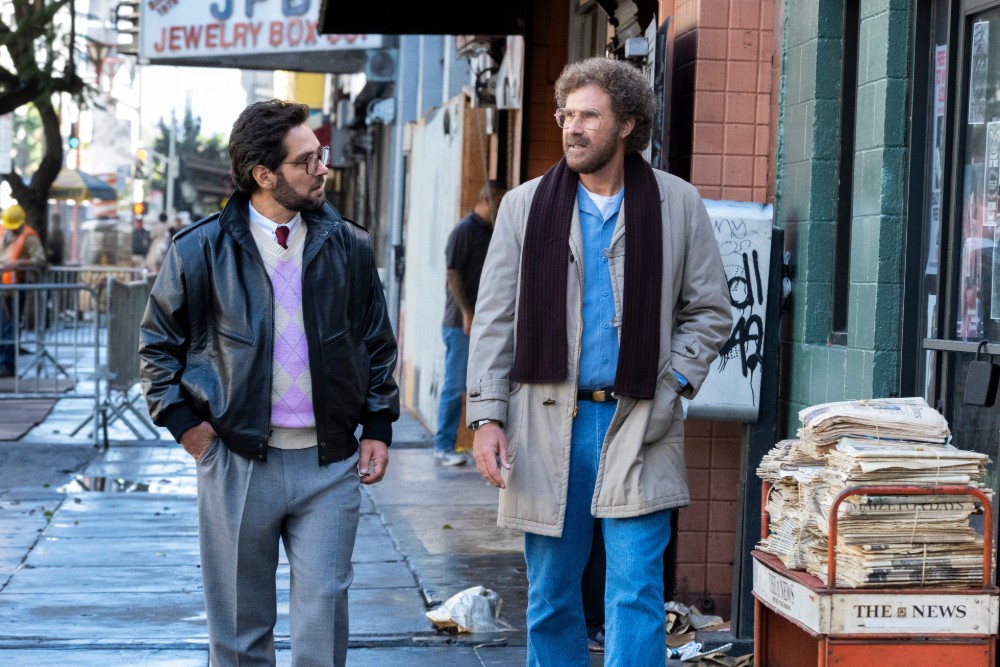
BTL: Let’s talk about The Shrink Next Door. I assume it was Georgia Pritchett who brought you onto that in development? At what point did you get involved in that project?
Yang: My “in” to Shrink was through a classmate of mine from USC, Brittney Segal, and she is an EP at Gloria Sanchez. I think they found the source material, and then they brought Georgia on in, in addition to Paul [Rudd] and Will [Ferrell], and when they were staffing up, I got an interview like anything else. We all hit it off really well. I haven’t worked on too many shows where there’s a female showrunner, and so her sensibility and her commitment to making the story as diverse as possible, that was a big draw for me as well. I think to this day, it was one of the most diverse and inclusive sets I’ve been on, which was not only a treat, but I think I really needed that anchor during the height of the pandemic. At least we had something really meaty to solve and put together.
BTL: When were they actually filming the series? It must have been during COVID as well, so did they start before the shutdown or somewhere in the middle?
Yang: It was mostly made during the lockdown. I think it was around September or October of 2020.
BTL: When you watch a show like this, you don’t necessarily think about the VFX, because they’re supporting, but I think there’s probably a lot more than I realized while watching. I read that a lot of it was recreating things like New York in the ’80s, so was that also partially due to COVID and not being able to go to places like New York to film?
Yang: I guess? This is part of the sector of VFX I really love and enjoy, and I think this is what brought me in when I was a kid as well. I love “invisible” effects. I think a lot of VFX practitioners can agree we’ve done a really good job when our work is really seamless and undetectable. We’re not really kind of being mentioned in any way, except on the overall, ‘Oh, this looked great,’ and how our work serves the story.
How it was explained to me was, ‘Hey, one of our bigger challenges was turning back the clock and recreating 1980s in New York City again with limited resources, just in terms of how closed off everything around us was.’ I think a lot of us were used to making projects and filming things in LA, so a lot of our usual standbys were just not available at the time. So it was just [about] really being resourceful and a lot of kind of reverse-engineering of, ‘Okay, here in the story, it’s this neighborhood in New York. This is what we’re actually seeing. How can we work with our department and the production designer and do everything we can, so we can get as much of New York City in the actual framing as possible?’
BTL: Did you have plates that you shot or was that not even possible since it’s set in a different time period?
Yang: We didn’t really have any period plates shot, so we relied heavily on archival footage. Like I mentioned earlier, we had Ghost VFX as one of the vendors. We also used my company Alpha Studios, with our sister company Tower 33 as well. We involved Mr. Wolf up in Vancouver, too, and between all four vendors, I think we were just really mindful of what we have on frame right now, and how can we utilize tricks like matte painting and so forth, and finding the shortest route to kind of hide the fact that this was, indeed, not New York City.
BTL: As a VFX Supe, what goes into your process or decision on which houses to work with and how to dole out the various sections of jobs to the various houses? Do you just have to go through various reels and see what they can do and figure out what they would be best for, like matte painting, as you mentioned?
Yang: I think part of the advantage that I also bring is, having worked at a few of the well-known houses, I kind of got a sense of what’s their strength and their capacity? I think during COVID, that part of it really shifted, but I think it’s knowing the relationships that you have formed along the way and what makes sense in terms of the amount of shots needed, versus the delivery date versus the specialty of each house. It’s always a moving puzzle of figuring out who to give this work to, but I think in the end, it was a good divide of work based on talent and availability and time.
BTL: You’re actually on set as well, so are you on set with some of the animators or artists from Alpha working on the visual effects while they’re shooting, just to make sure that what they’re filming lines up?
Yang: On set, it was just myself and my Visual Effects Coordinator, Lauren Hurdle, who I could not have done this project without. She was really our heartbeat, in terms of meeting all of our deadlines and communicating a lot of information to all the vendors while working from home. On set, it was just the two of us.
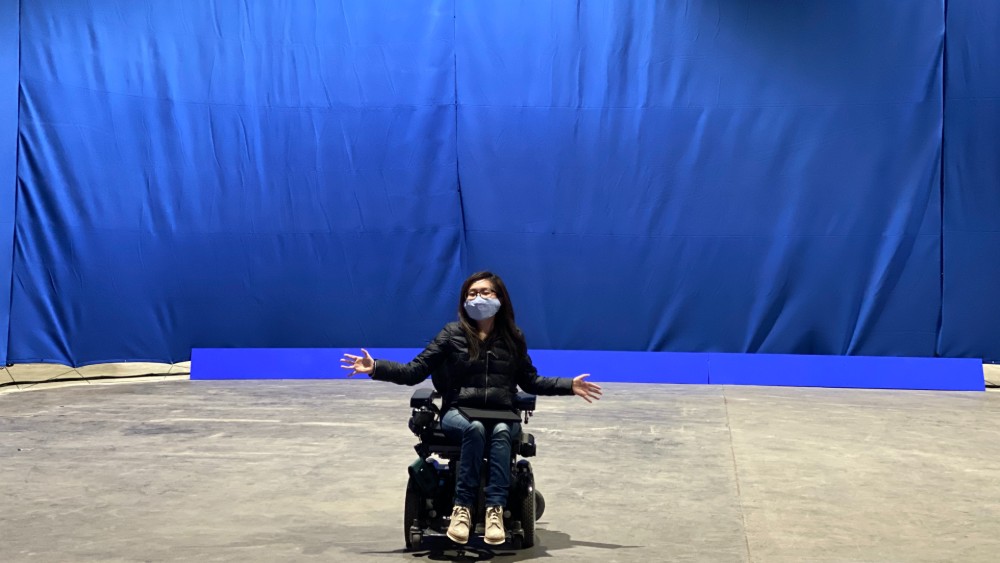
BTL: I’ve been to many big sets, like some of Zack Snyder’s movies, where they’ll have an entire team of people on computers working on set, taking stuff that was shot and making sure they work, things like that. Were you doing any sort of pre-visualizations of the environments created before they shoot? Or is it all being done in post?
Yang: That one we did not. We had a lot of location scouts, and we were just able to use that with our storyboard artists and try to figure out the best angle, and the best ways to really use the sliver of what looked like New York, here in LA, and just really play around with framing, so we’re kind of getting the feel [that] we’re hoping for on set. That would be for VFX to augment it later on.
BTL: I’ve only watched the first two or three episodes so I’m not sure how far it goes, but is New York evolving over the course of the series as the story gets more into the present day?
Yang: It happens chronologically, with a few years skipped as well. I think after a few episodes, you really get into the heart of this family, and what family means for them and what relics are still left, even though both of the main characters’ parents have long passed, and then just how disruptive [Paul’s] character was. Ike just came in and kind of overtook all the nice family structure [Will’s] family had left.
BTL: I would love to talk more about the diversity side of things as far as what you do and what Alpha is doing in terms of hiring underrepresented people and putting out the word to get them into those key VFX roles.
Yang: I recently saw a study, I think it was a collaboration between USC Annenberg and Women in Animation, in which they looked at the films from the last 10 years, and they found seven women visual effects supervisors of color. I know of myself, I know of Sheena Duggal, and I know one or two others, so who are the other four people? These are people that I want to meet and become friends with somehow. I think that just really speaks to how, even though we have representation here and there, overall, our numbers are so abysmal that it’s not even pronounceable. It’s like 0.001 or something like that. I think it’s 208 visual effects supervisors who are a male versus one who’s female. I think it’s human nature to hire and work with people who mimic us and look like us, and what I noticed through all the projects that I work on, I am very intentional about bringing on as many women as possible. My male counterparts, they do that as well before all their male friends. I think it’s just really important to find more diverse candidates at the very top, so then this inclusion can trickle down naturally.
One of the other initiatives that I’ve started during the pandemic… I kind of see this pandemic having Shrink as one of my dear babies to my heart. Another pandemic baby of mine is a disability advocacy non-profit I co-founded called 1in4Coalition. We derive our name from the 2020 census where one in four adults in America identify as having a disability, whether it’s visible or invisible. I think at this point I’ve done maybe 60, 70 projects, and I’m always the only one who has a visible disability. I think it’s really time for when we talk about diversity and inclusion, and all the DEI (aka “diversity, equity, and inclusion”) work, for us to become DEIA — add the “A” for accessibility, not only in terms of crew, but also in terms of the format in which your projects are being delivered.
I have a good friend who is legally blind, and a few years ago, he shared with me how few options he had in terms of purchasing movies on iTunes, with an audio track, with audio description. I think it was like, six. Imagine [searching] on any large conglomerate or an app like iTunes or Amazon or Google Play and seeing six results. I think it’s really a wake-up call for the business side, as well. One in four, 25 percent, that is a lot of subscribers worldwide, and that is all the opportunities there are for us to be inclusive in our storytelling and the making-of process, too, so then we can also see people with disabilities — not only as consumers but also as co-creators as well.
BTL: Do you do outreach to schools? I have friends with kids who are always on their iPads creating things and doing animation, and I feel there must be a lot of young girls who would do that if they were just told, ‘Yes, you can do this.’ Is that part of your initiative?
Yang: A big part of our work is focused on education. So currently, in the Visual Effects Society, during the pandemic, we started a peer-to-peer mentorship program, as well as an outreach program. The peer-to-peer is finding someone within your level — a few years ahead of you or a few years behind you — and having that access line to talk to more members within the VFX community in general, and also outreach where we’re taking volunteers who would do these presentations on Zoom for a lot of the local schools in LA, especially the underserved communities as well, to let them know about visual effects animation, and getting the kids to think about these areas early on as a viable career option.
BTL: Well, it was great talking to you. I’ll definitely be watching the rest of The Shrink Next Door with a keener eye when you get to the ’90s, since I’ve lived in NYC for over 30 years.
Yang: I hope we did New York justice. I would say a good portion, maybe like 90% of our EPs, were all from New York and the area, so that was kind of the pressure on us, too, of capturing the spirit and the essence [of New York], and also be faithful to archival footage of the area back in the day.
Ms. Yang’s work can be seen in Season 1 of The Shrink Next Door, which is streaming on Apple TV+.





